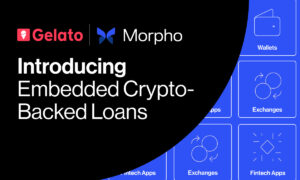In the ever-changing realm of digital currencies, the unpredictable surges and dips in market volatility can be intimidating for both experienced investors and newcomers.
While Bitcoin and Ethereum often steal the spotlight, there’s a quietly influential player in the crypto landscape working to bridge the gap between the unpredictability of cryptocurrencies and the stability of traditional financial assets – enter the world of Stablecoins.
True to their name, Stablecoins aspire to offer a sense of steadiness amid the often erratic fluctuations of the crypto market. They are purposefully crafted to maintain a consistent value over time, making them a practical choice for a wide range of applications, from everyday transactions to intricate financial maneuvers.
Grasping the Essence of Stablecoins
At their core, Stablecoins secure their stability by linking themselves to a pool of assets or an external reference point. This reference can take the form of a conventional fiat currency like the US Dollar, tangible assets like gold, or a collection of various cryptocurrencies. The fundamental idea is to anchor the Stablecoin’s value to something considered stable, ensuring a consistent price, which stands in stark contrast to the often highly volatile nature of most cryptocurrencies.
Digging deeper, we encounter three primary categories of Stablecoins, each with its distinctive method for preserving price stability:
Fiat-Collateralized Stablecoins: These Stablecoins are backed by traditional fiat currencies at a 1:1 ratio, held in reserve banks. They serve as a direct link between the digital and traditional financial worlds. However, they do carry the typical risks associated with conventional banking systems.
Crypto-Backed Stablecoins: These Stablecoins are collateralized by other cryptocurrencies. They use a mechanism called over-collateralization to maintain stability even in the face of market turbulence. However, a significant decline in the value of the collateral can potentially disrupt the stability of the stablecoin, as seen with Terra USD (UST).
Algorithmic Stablecoins: These innovative variants do not rely on collateral. Instead, they employ algorithms and smart contracts to dynamically adjust the supply, aiming to uphold a steady value.
Navigating the Spectrum of Use Cases
Stablecoins have a wide range of practical uses poised to reshape finance. Key applications include:
- Remittances and Cross-Border Payments: Offering quicker, cost-effective alternatives to traditional international money transfers.
- Micropayments: Enabling innovative micropayment solutions for small transactions, unlocking new business models.
- Decentralized Finance (DeFi): Serving as a linchpin in DeFi, facilitating peer-to-peer lending and borrowing on decentralized platforms, empowering individuals to manage their finances without traditional intermediaries.
- E-commerce and Online Marketplaces: Providing secure, efficient payment methods for online purchases, reducing chargeback and fraud risks. This allows merchants to expand their customer base to include crypto-savvy individuals and global buyers.
- Charitable Donations and Aid Distribution: Ensuring transparency and traceability in charitable donations, ensuring funds are used as intended. In times of crisis or natural disasters, stablecoins enable swift and efficient aid distribution, reaching those in need without the delays of traditional systems.
As the adoption of stablecoins continues to grow, we anticipate the emergence of even more innovative use cases, cementing their role as a fundamental component in the future of finance.
Bridging Traditional Finance: Connecting Two Worlds
Stablecoins are gradually weaving connections between traditional finance and the digital currency realm. Through partnerships with conventional banks and financial institutions, they are enhancing the safety and user-friendliness of the cryptocurrency experience.
Validating the Origins of Crypto Assets: To enable investors to seamlessly integrate cryptocurrencies with traditional financial tools, companies are actively seeking ways to legitimize users’ cryptocurrency assets and their provenance for traditional financial institutions. This step addresses misconceptions and challenges inherited from the early blockchain days.
Mainstream Adoption and Bank Acceptance: With a growing number of individuals investing in cryptocurrency, banks are navigating avenues to acknowledge cryptocurrency and digital assets as indicators of wealth. A survey conducted by Triple-A reveals that approximately 13.7% of US adults, or about 46 million people, own cryptocurrency as of September 2023.
Central Bank Digital Currencies (CBDCs): The introduction of CBDCs brings us closer to a scenario reminiscent of George Orwell’s “Big Brother,” marking a subtle shift in the complex relationship between traditional money and the modern digital cash landscape. Despite their portrayal as bridges between conventional money and cryptocurrencies, CBDCs actually serve as tools for central banks to tighten control while disguising themselves as part of the digital revolution.
Charting the Path Ahead: Regulatory and Evolutionary Navigation
Stablecoins offer more than just stability in the digital asset realm. They are at the forefront of ushering in a new era of financial innovation that promises inclusivity, efficiency, and transparency.
With governments and financial institutions worldwide focusing on the crypto space, the regulatory landscape surrounding stablecoins is destined to transform, influencing the course of this financial innovation.
The intriguing world of stablecoins presents an enticing opportunity to explore the cryptocurrency domain, particularly for those cautious of the volatility linked to traditional cryptocurrencies. By comprehending the mechanics and potential advantages of stablecoins, you take a significant stride toward participating in a burgeoning financial revolution.
Conclusion: Your Journey Through Stable Waters
Stablecoins provide numerous advantages compared to conventional cryptocurrencies, including diminished price volatility, enhanced portability of crypto assets, and the capacity to enable direct peer-to-peer digital transactions without reliance on intermediaries.
Yet, they come with certain drawbacks, such as potential reserve inadequacies and regulatory scrutiny stemming from their rapid expansion and potential impact on the broader financial system.
Join us as we delve deeper into the intricacies of the crypto world. Stay updated by subscribing or exploring our advanced guides to continue your journey in cryptocurrency education.
Want More Cutting-Edge Crypto News?
Follow Us: X TikTok Instagram Telegram LinkedIn
Sign up to our newsletter at the bottom of the page
Check Out Our Top 10 Crypto Currencies of 2023
This article is intended for educational purposes and is not financial advice.



































